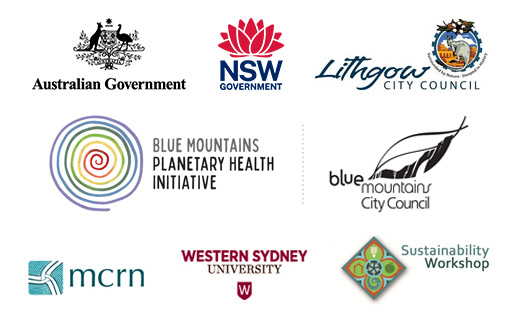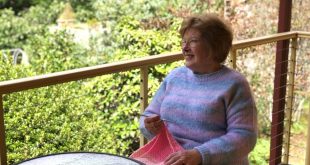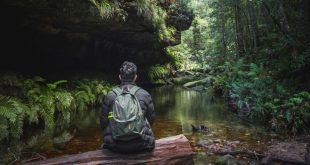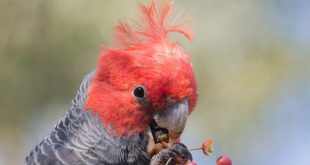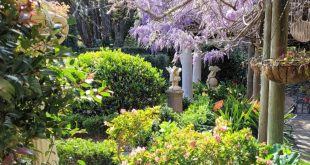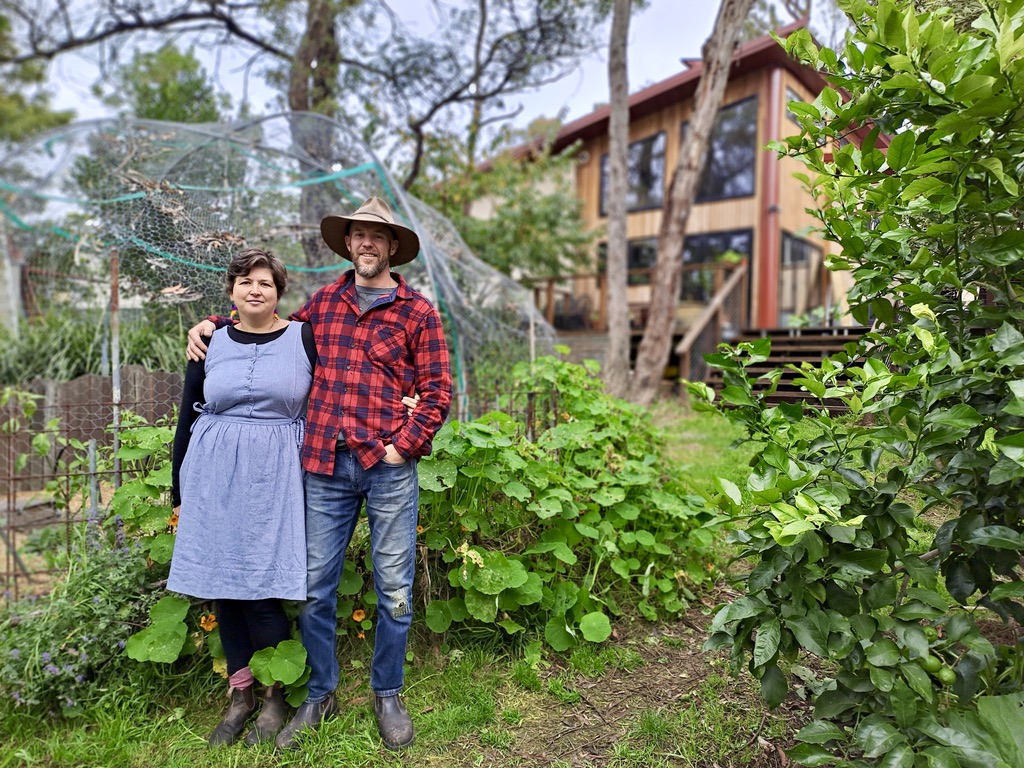
Polona and Nathanael in their backyard ‘farm’ in Bullaburra
Story and photographs by Belle Butler
This story includes descriptions and images of meat, which some readers may find distressing.
Under the artificial lights of a shopping aisle, it’s easy to forget the origin of food. Clean-washed ‘perfect’ carrots tell us nothing of the earth they were pulled from, the ‘best pick’ apples present a façade of perfectionism that their discarded cousins could not live up to, and the once earthy scent of cereal grains is lost via over-processing and over-packaging. It is no different in the meat aisle, where it has become easy for humans to forget the fur and feathers that once cloaked the animals on the shelves.
(Re)-packaged in tightly sealed plastic, meat at the supermarket bears no resemblance to its original form. It is quick and easy to grab in a hurry and I doubt anyone pauses to consider the unique sounds an animal made when it was alive. Instead, the beep of the scanner is heard as the meat passes through to be placed in shopping bags.
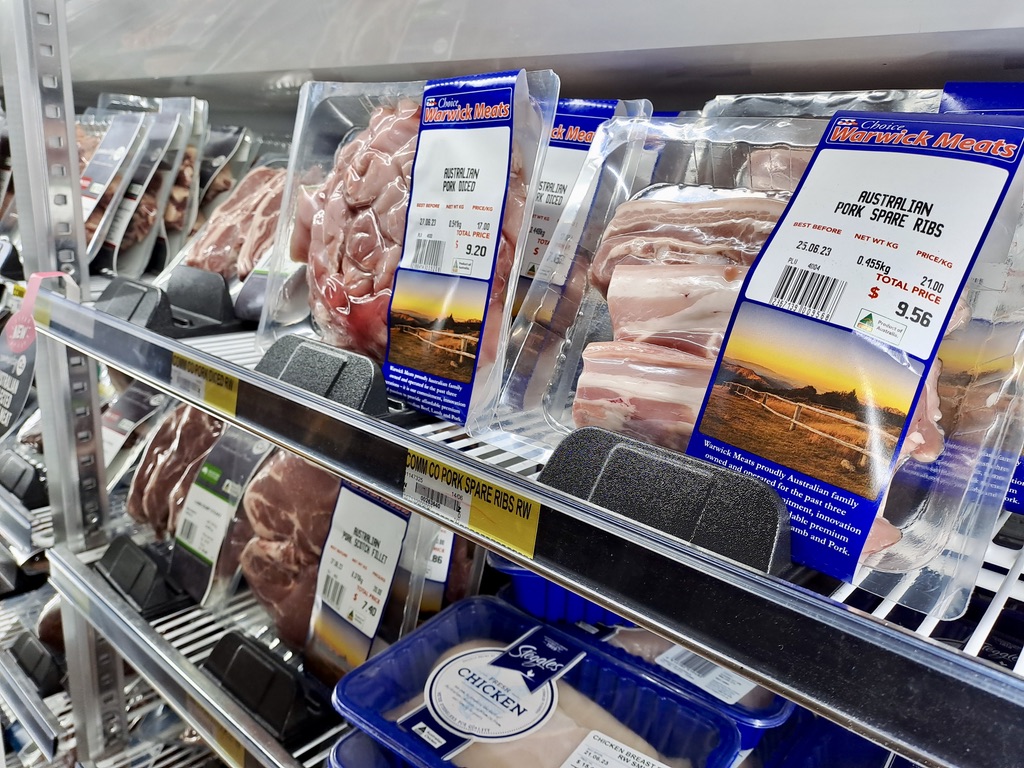
(Re)-packaged meat at the supermarket
Certainly, the ease and sanitised setting are reasons we, collectively, eat so much meat. Globally, meat consumption has more than doubled over the last 30 years, which can be attributed to population and wage growth as well as the persistence of meat dominant eating habits in wealthy countries. Implications from these statistics are multi-faceted, relating to animal welfare and to environmental concerns. Food production in general is a major contributor to rising greenhouse gases. As with other industrial farming, large scale livestock production has a significant immediate impact on the environment and is a major factor in land degradation and desertification. The transportation of meat from farm to table also drives up food miles associated with the product. For many of us, this is not news. A lot of people are trying to curb these numbers by consuming less meat, only particular kinds of meat, no meat, no animal products or sourcing local meat raised on small-scale farms using regenerative methods. There are different, often fiercely argued, ways to act on this issue.
For Polona and Nathanael of Bullaburra, raising their own meat is a way of taking themselves out of the global meat-impact equation, ensuring they get nutrient dense meals as they practise regenerative farming methods that improve the health of their land. They raise ducks, quails and rabbits for the purpose of meat consumption (although, the latest trio of rabbits haven’t been ‘breeding like rabbits,’ which has put a halt on the production line there).
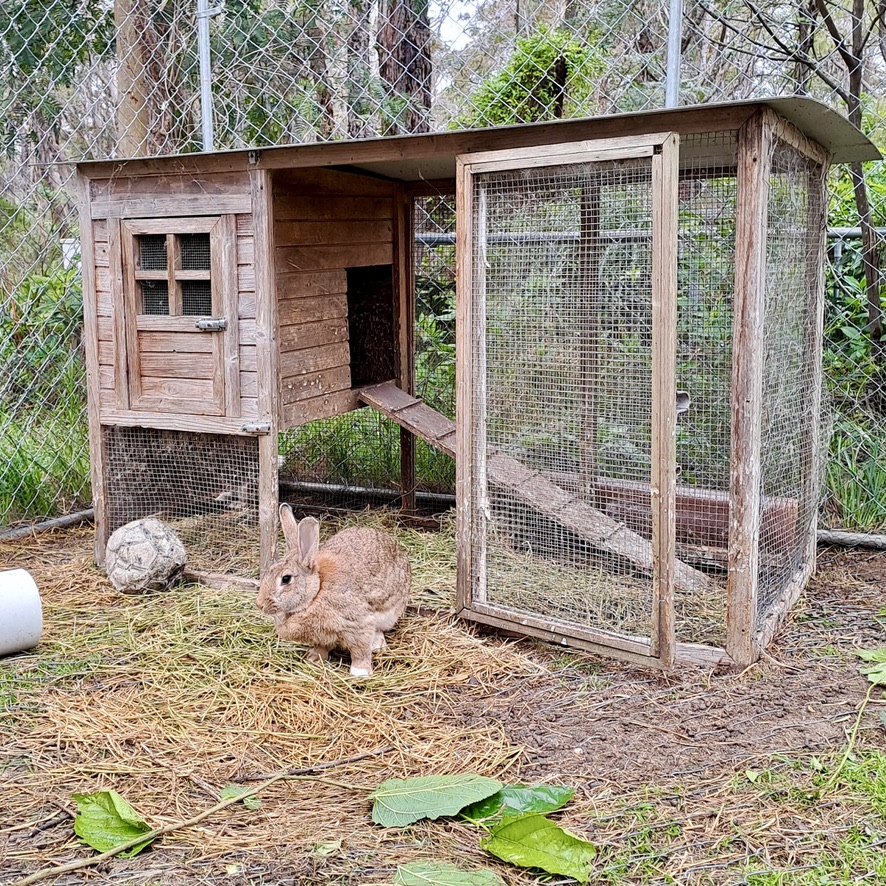
This batch of breeding rabbits haven’t exactly been ‘breeding like rabbits’
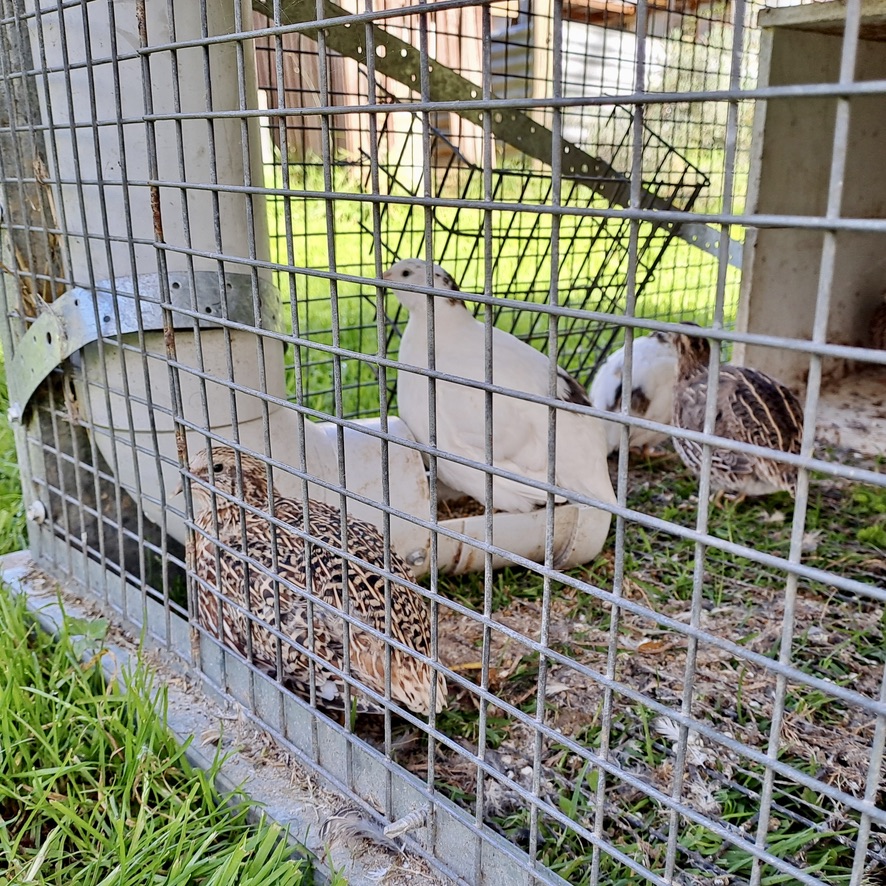
Meat quails in their tractor
“We call it conscious carnivory,” Nathanael explained, “because we think it’s really important to know where your meat comes from. We’re not ashamed to be meat eaters but we’re really steering away from unconscious carnivory – or hiding away and not looking at it for what it is.”
Polona added: “We choose to eat meat, and so we choose to be active, intimate participants of the food chain, and we have a huge connection with our animals. We do a round every morning and every evening. We talk to them, we love them, we feed them every day or move them on to new pasture or let them free range, and we pat the rabbits. So, they’re a really big part of our lives, and then their life helps to sustain us. We can then use that energy to keep the cycle going.”
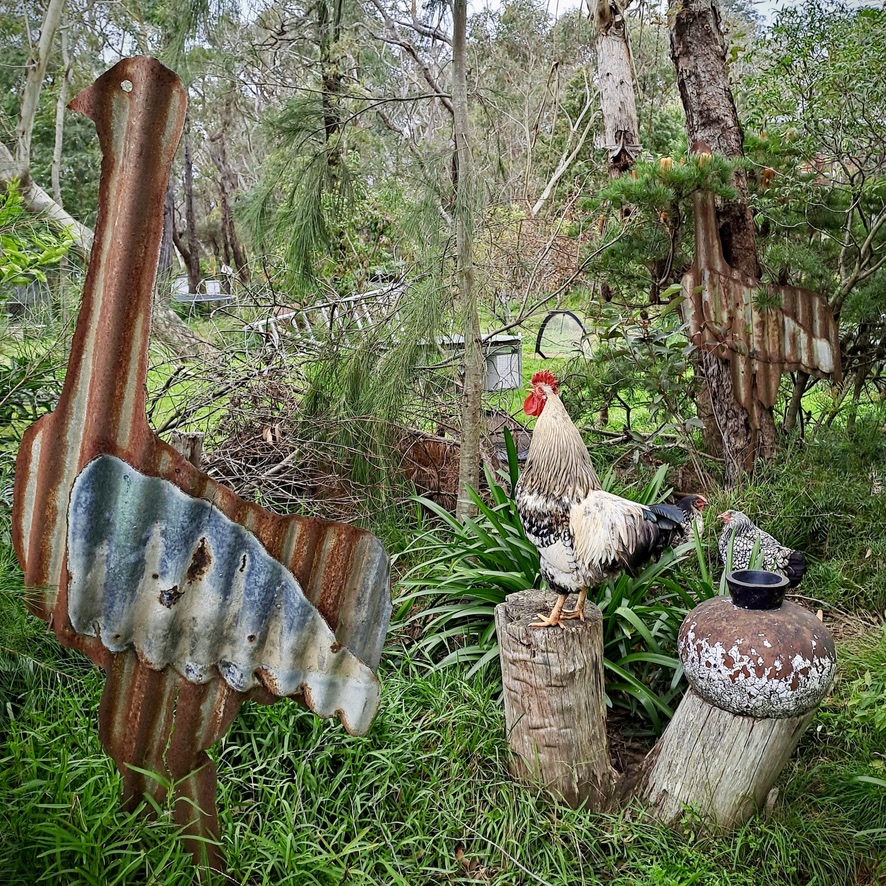
Free range rooster posing for a pic
That cycle is demonstrated at Polona and Nathanael’s home, where a front yard community compost bin invites passers-by to drop their food waste. The bin is accompanied with a sign that states: “If food waste in landfill was a country it would be the third biggest contributor to greenhouse gases in the world!” This seems to underpin many of their practices. They grow what they can of their own produce and meat, source anything extra direct from local farmers or Lyttleton Stores, and return any waste to the land to improve it. “We’re trying to be self-sustaining or as community sufficient as possible,” said Polona, who believes that regenerative agriculture is one solution for climate change. She added: “We’re trying to reduce our whole environmental footprint, and trying to support people that are supporting the land. The basic thing is … in the end we want to leave our land better than when we found it.”
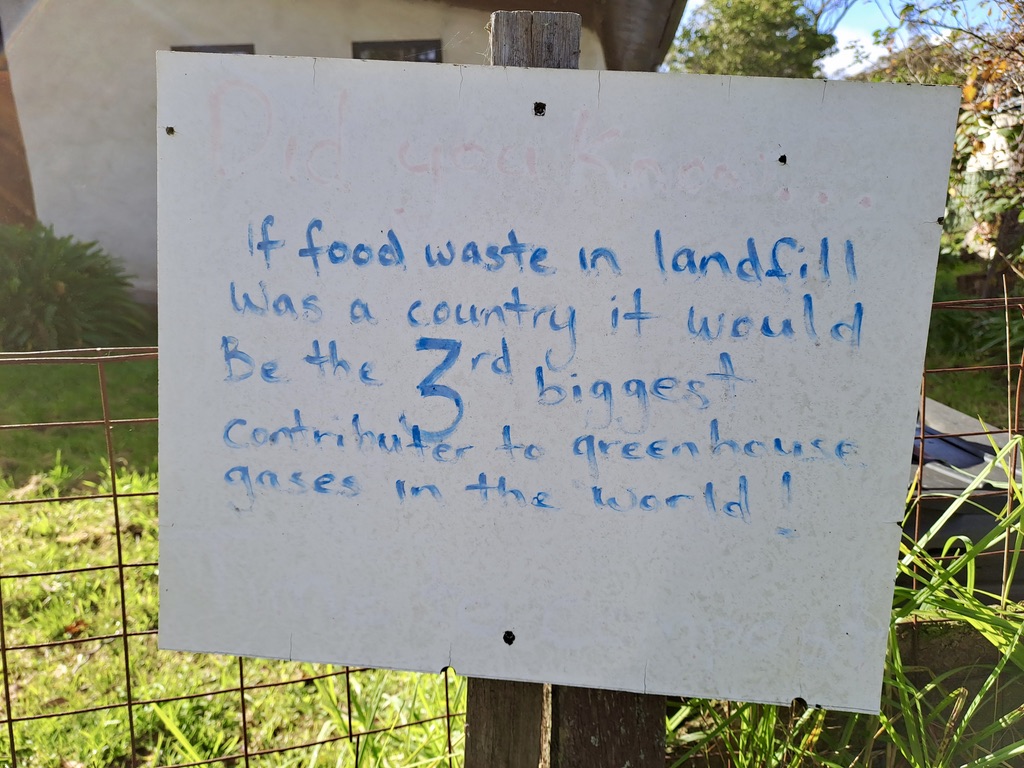
A sign that adorns Polona and Nathanael’s front yard fence
To support their goal of community-sufficiency they brew a popular kombucha sold around the Mountains. “Kombucha is a big part of our ability to live sustainably,” said Nathanael, “because not only is it making money for us, but it’s also a barter product and so we’re able to skip out of the money chain and just go on perceived value between our friends and some other businesses as well.”
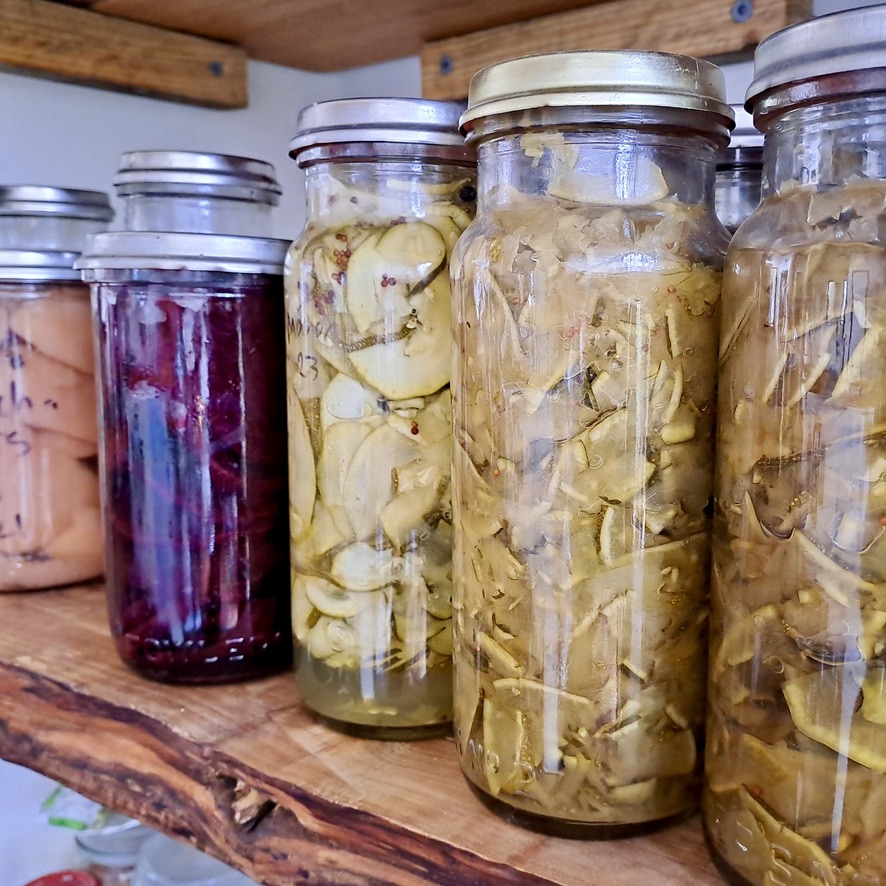
Preserved home-grown produce.
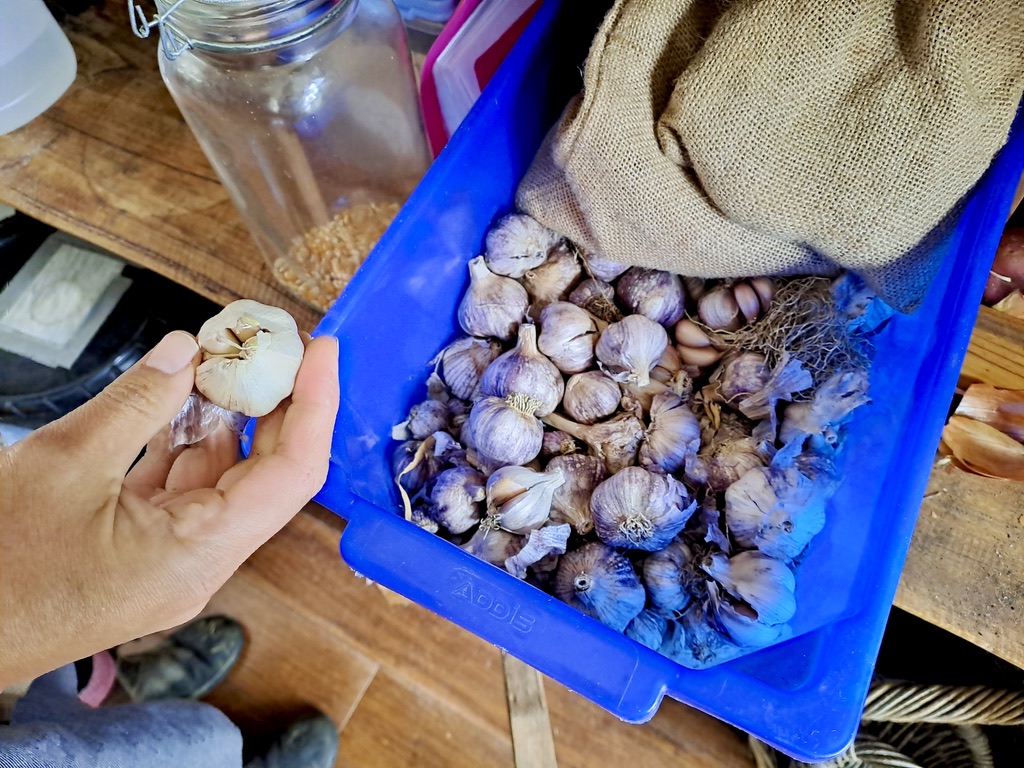
This was the first year Polona and Nathanael successfully grew enough garlic to sustain them for a year as well as enough to plant for next season.
This multiplicity of self-sustaining efforts has undergone an evolution. It started with the simple realisation that mass-produced food products were full of chemicals. Polona and Nathanael began eating more organic food and noticed an improvement in their health and a reduction in portion sizes needed to sustain them. They put this down to the greater density of available nutrients in organic and pasture raised produce.
This prompted them to begin growing their own food. Deciding to raise their own meat was not an easy step and Nathanael is still affected by the first time he killed a rooster. “I was faffing about, procrastinating,” he said. “You can’t help it. When you’re looking into the eye of the animal you’re about to slaughter you take that position. You can’t help but put yourself in their shoes, and that’s really tough. That’s the core struggle for most people and that’s the core struggle for me every time I kill an animal.”
It is perhaps because of this internal struggle that the meat raised at Polona and Nathanael’s home is so valued by them. “We give our animals really good lives,” said Nathanael. “They live on a beautiful property, they get all the food they want. We try to make them really calm on their last day and then I take great pains to make it really quick.”
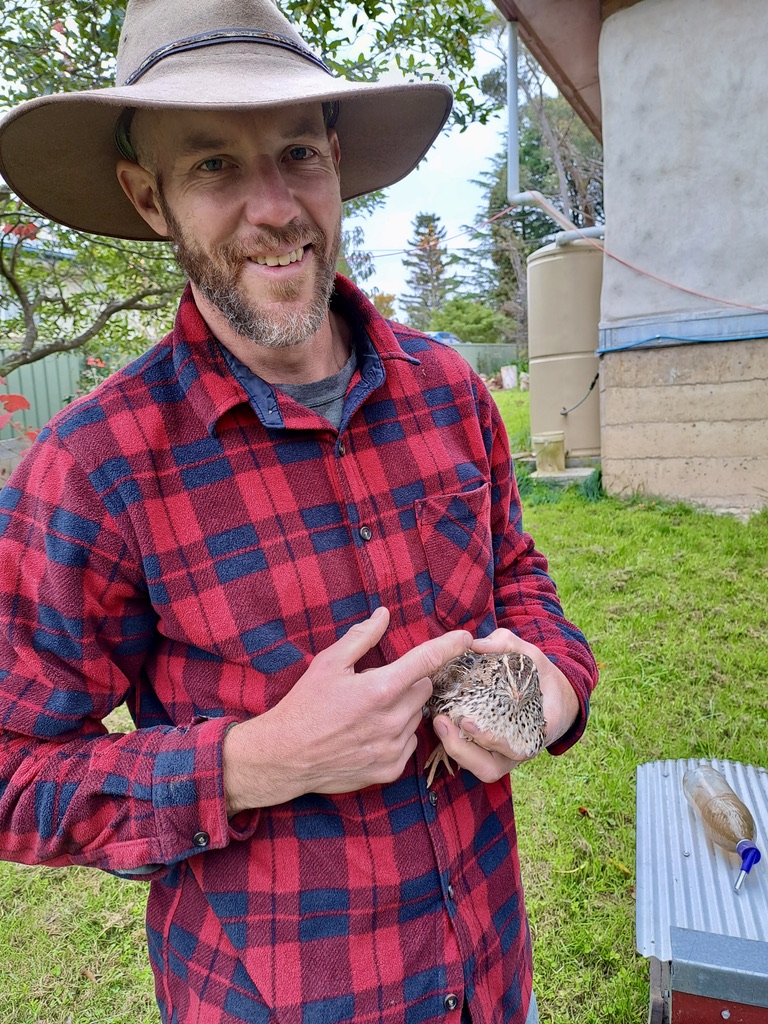
Nathanael holding one of the breeding quails. Eggs from these birds provide the quails used for meat.
Once the meat is butchered, it goes a long way. Polona and Nathanael have noticed that less of it is required to sustain them and their two growing boys, whether that is a result of higher nutrient availability in home-grown meat or their more intimate connection with the farming process. Any part of the animal that is left over is then fed to the compost or directly to the soil where fruit trees grow. “We are part of the food chain,” Nathanael said. “We are not excepted from that. We take the bit that we need and we give the rest back, and the garden is flourishing as a result.”
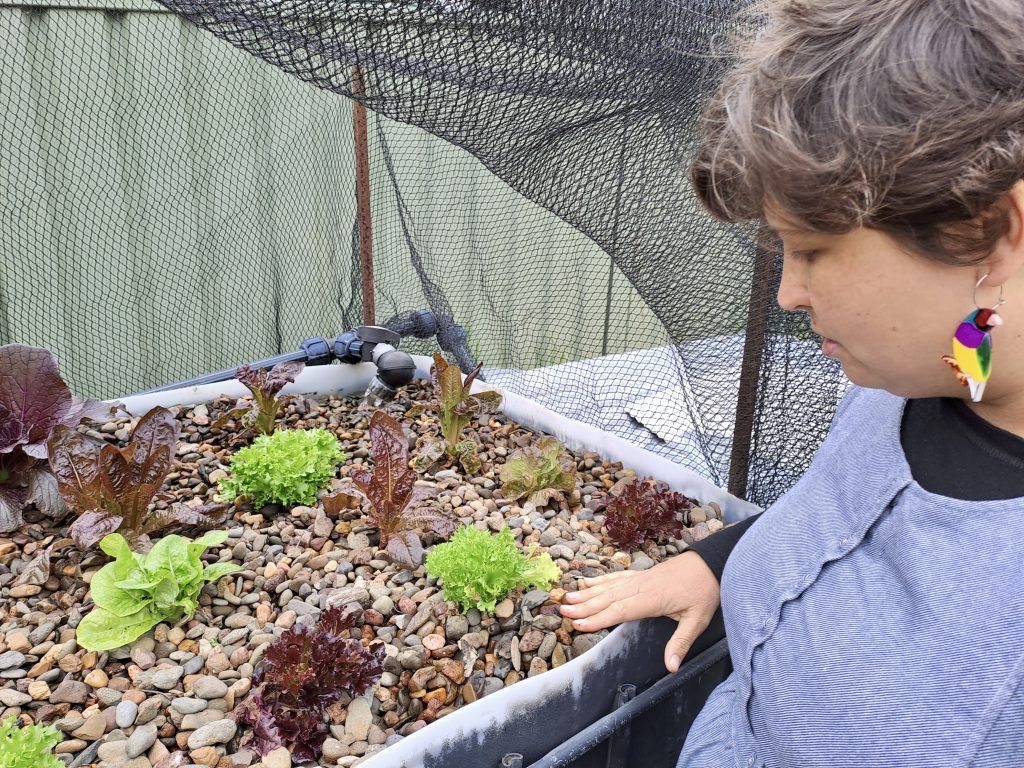
Polona and Nathanael have an aquaponics system that supplies them with most of their leafy greens
Indeed, the garden was looking lush when I visited. It provided an idyllic backdrop of ‘farm-life’ for the occasion, which was to witness the killing and processing of 15 quails. I am a meat eater: one who tries to do so consciously, eating only small amounts that are sustainably sourced, with environmental impact at the forefront of my choices. However, like most of us, I am disconnected with the source of my meat and detached from the process of taking one life for the sustenance of another.
My emotions first bubbled over at the mere discussion of it. Nathanael was taking me through the process of what I was about to see. The imminence of it hit me. There was the intrusion of a thought that right at that moment these little creatures were alive, that shortly they would not be, and that we were in control of that. I cried and told him that my tears were not from a place of judgement. Both Polona and Nathanael reassured me that my reaction was normal and welcome.
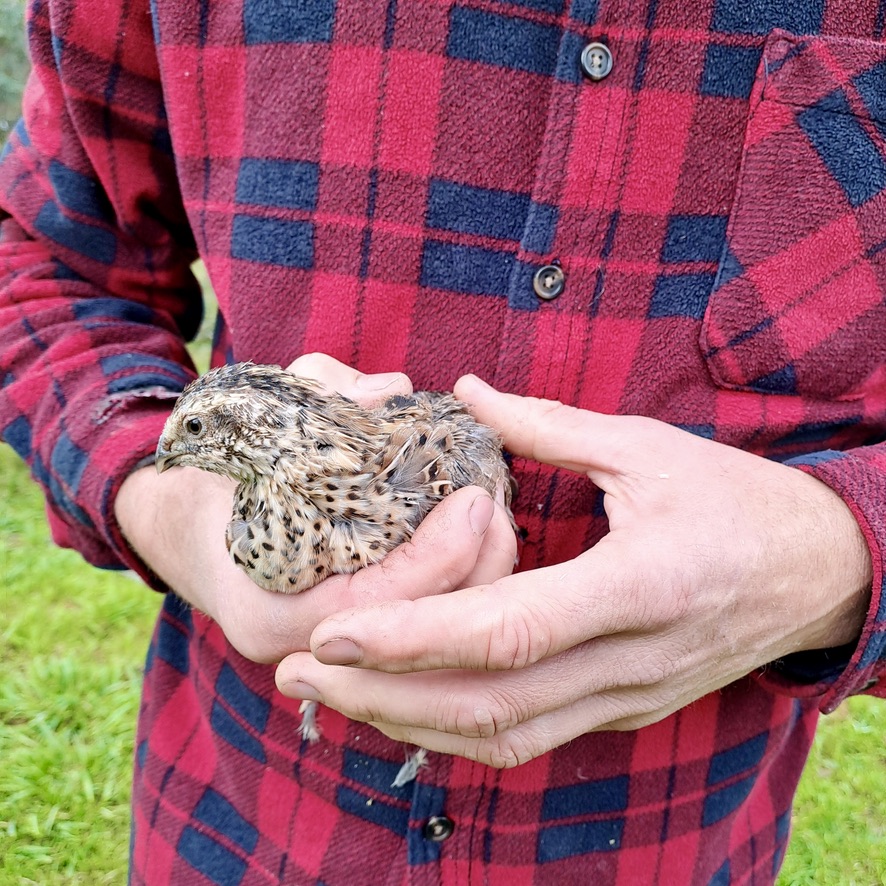
Nathanael holding one of the meat quails to be killed and processed that day.
Outside, the quails pecked happily at the ground. They were in a moveable tractor that had given them access to many a fine feast and were now positioned on a lush patch of lawn. One side of the tractor had a solid board that provided a visual shield to prevent the quails from witnessing the killing or processing.
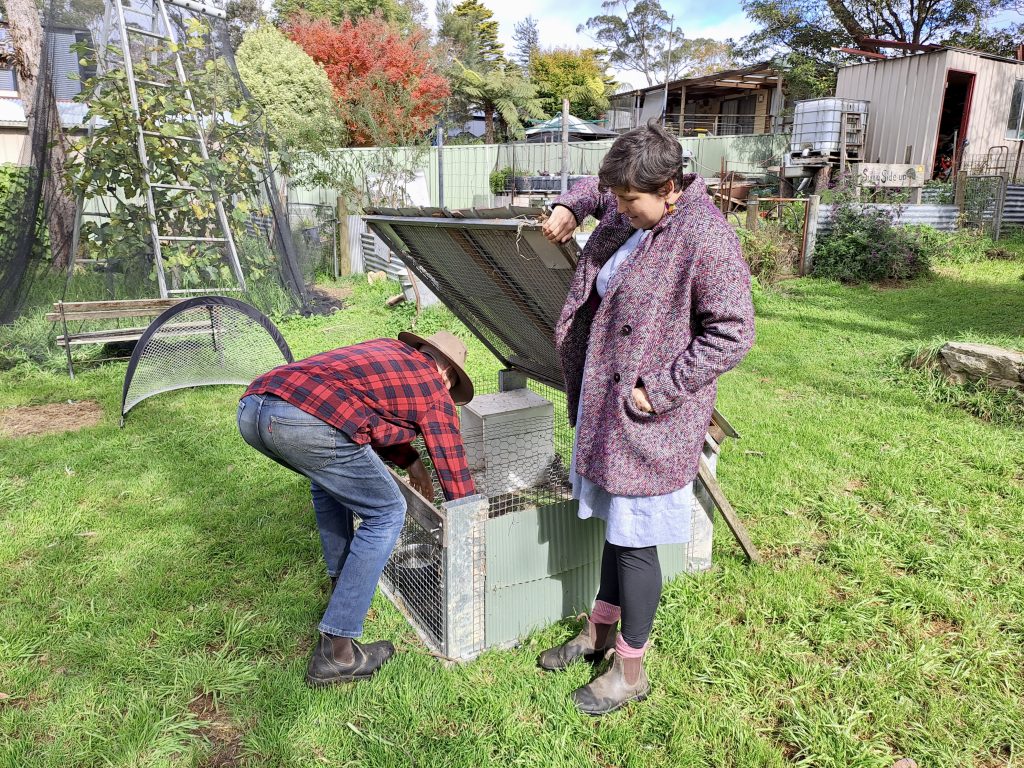
Retrieving one of the meat quails
Polona opened the tractor while Nathanael picked up a quail. He cradled it gently and it chirped. I patted it and I felt resistance. An urge to delay. I noticed myself shaking and tears coming on but I stayed for the killing and processing of all quails.
Although it became easier to witness, I do not feel that it desensitised me. Rather, I feel like a process of acceptance happened, a justification of sorts. If we are to open our eyes and look, if we are to consider the reality of meat consumption, then, one way or another, we find ourselves justifying our choice.
Nathanael and Polona were vegetarian for a time but felt that their health suffered from it. Raising their own meat is their way of confronting the issues that arise from meat consumption. They make a conscious choice about how they partake. My own justification comes off the back of 10 years of vegetarianism and advice from multiple health professionals (including a vegan acupuncturist) that with existing health conditions, I needed to eat meat.
It was unpleasant to watch animals being killed, but I was immensely grateful for the opportunity. That evening as I cooked for my family, I found that I placed a huge amount of significance on the meal. I valued the meat differently and felt utter gratitude towards the animal.
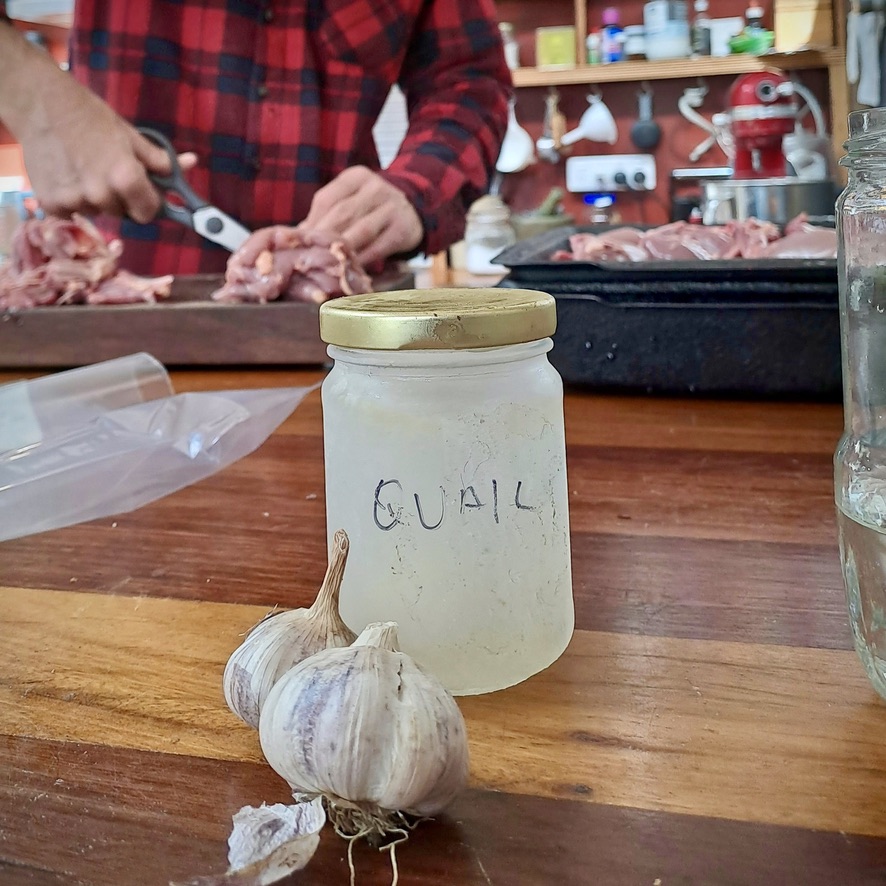
Polona and Nathanael make stock out of any animal bones.
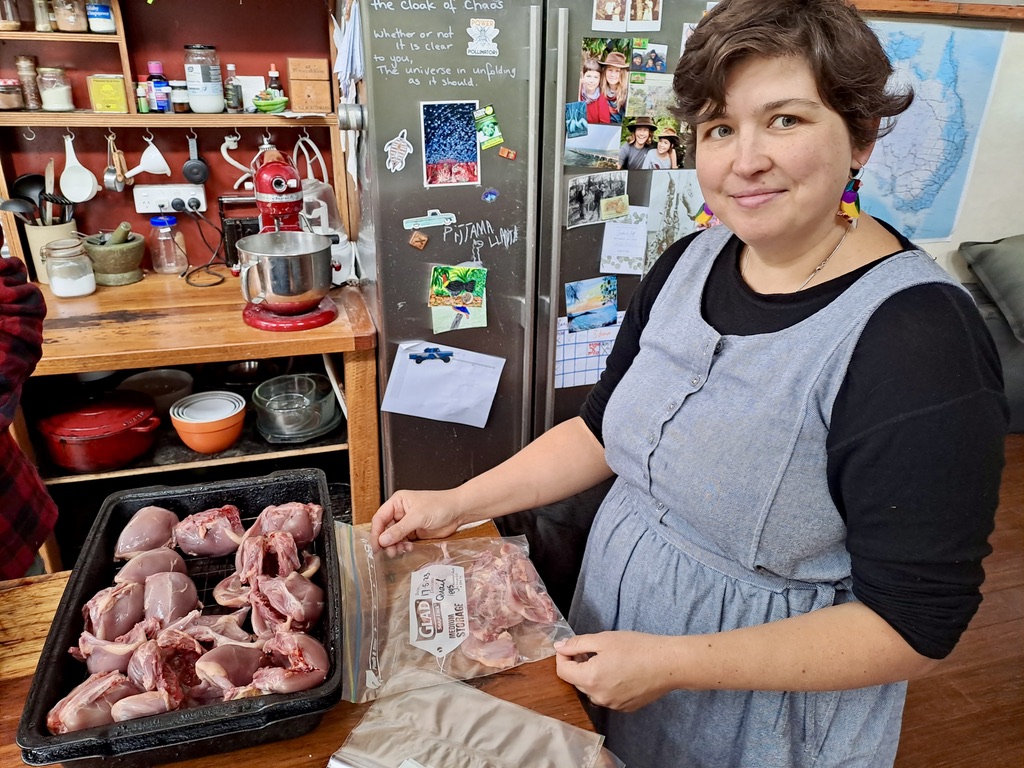
Polona placing batches of quail meat into freezer bags for consumption at a later date.
When I left Polona and Nathanael they were about to plant citrus trees in their backyard. They had a bucket of ‘waste’ from the quails, which they would disperse among holes before planting their trees. “It feeds the microbiome of the soil,” said Polona. “And so the cycle continues.” Blood and bone from animals raised on the land, returned to the land.
If you are interested in learning how to raise and process your own meat, Nathanael and Polona are considering hosting workshops. You can contact them via their Instagram page at Sunny Side Up Farm: @sunnysideup_farm
They recommend Down to Earth Produce for box deliveries of meat raised in O’Connell, in between Bathurst and Oberon, and they suggest the following sources for further reading:
‘Soil’ by Matthew Evans
‘Call of the Reed Warbler’ by Charles Massey
Going meat-free will not prevent animal suffering
Cows are not the new coal — here’s why | The Hill
This story has been produced as part of a Bioregional Collaboration for Planetary Health and is supported by the Disaster Risk Reduction Fund (DRRF). The DRRF is jointly funded by the Australian and New South Wales governments.
